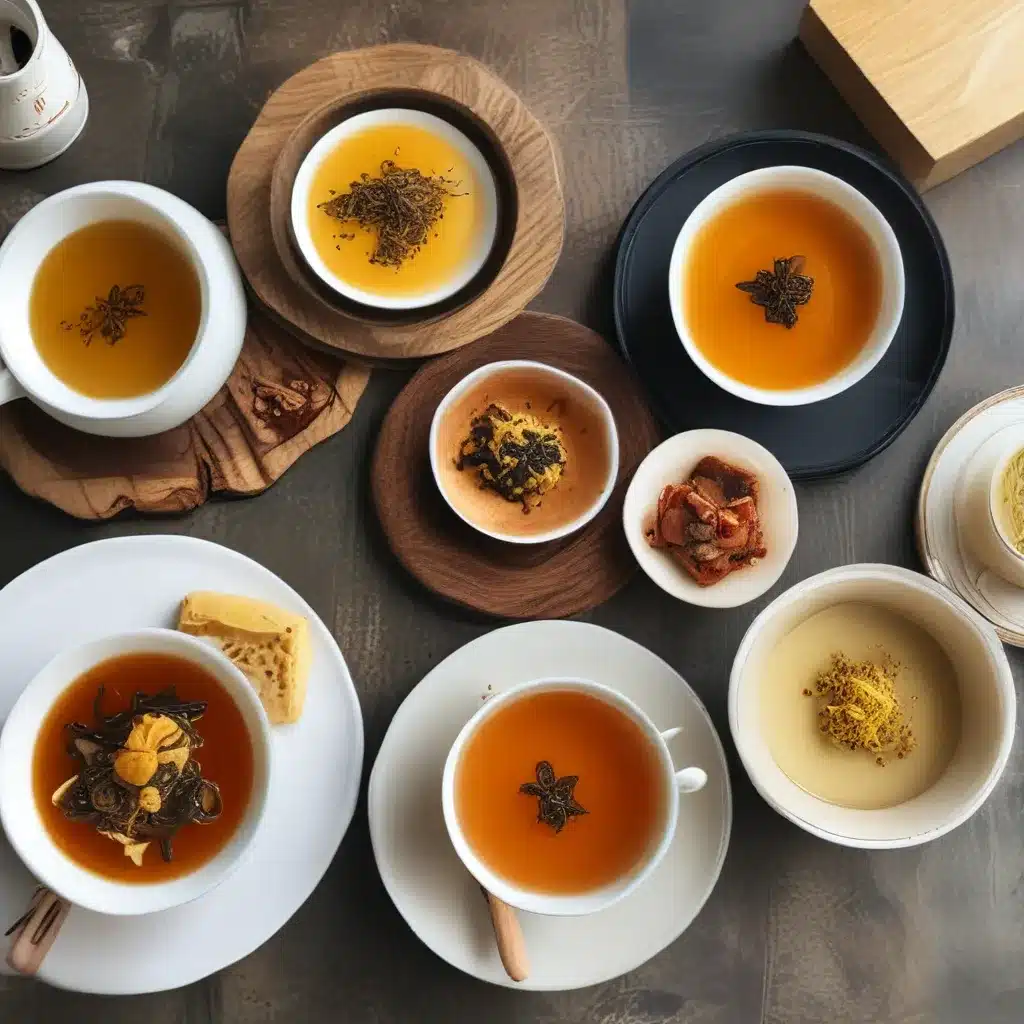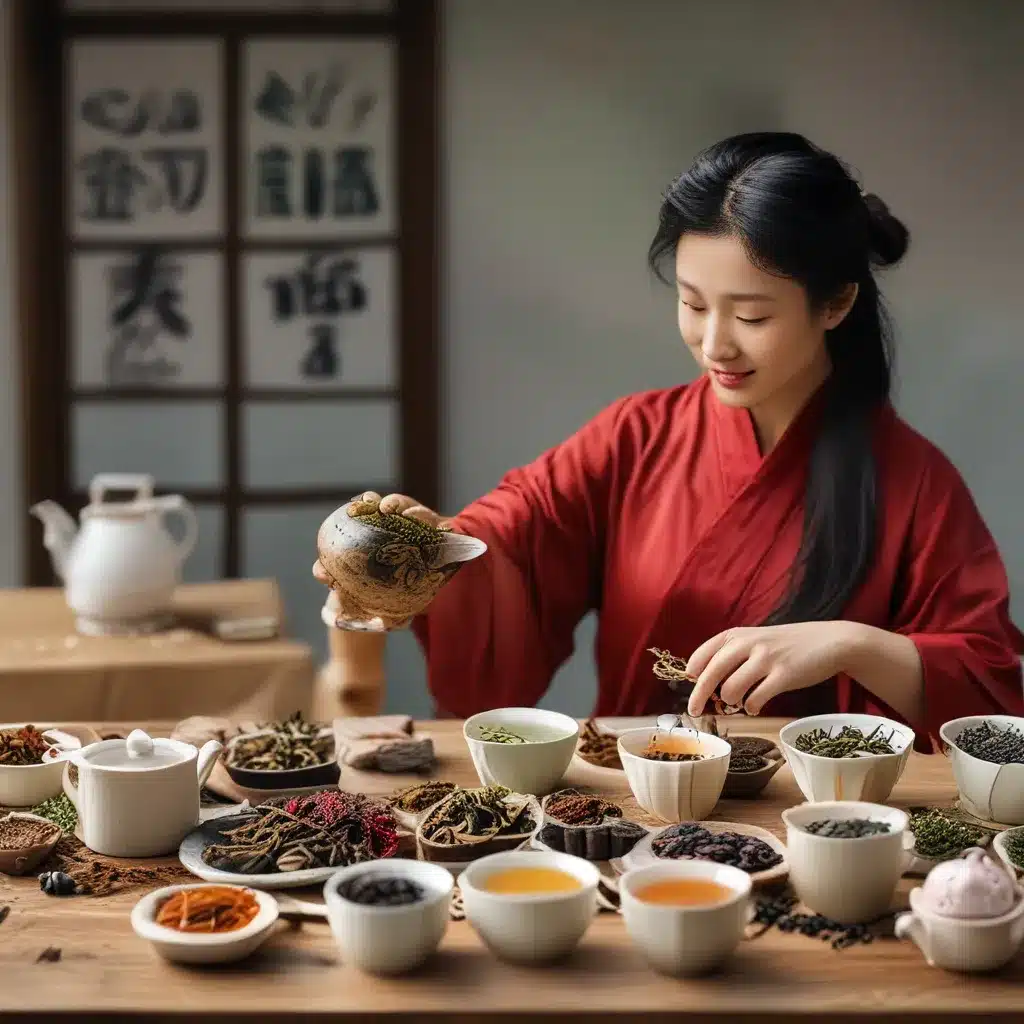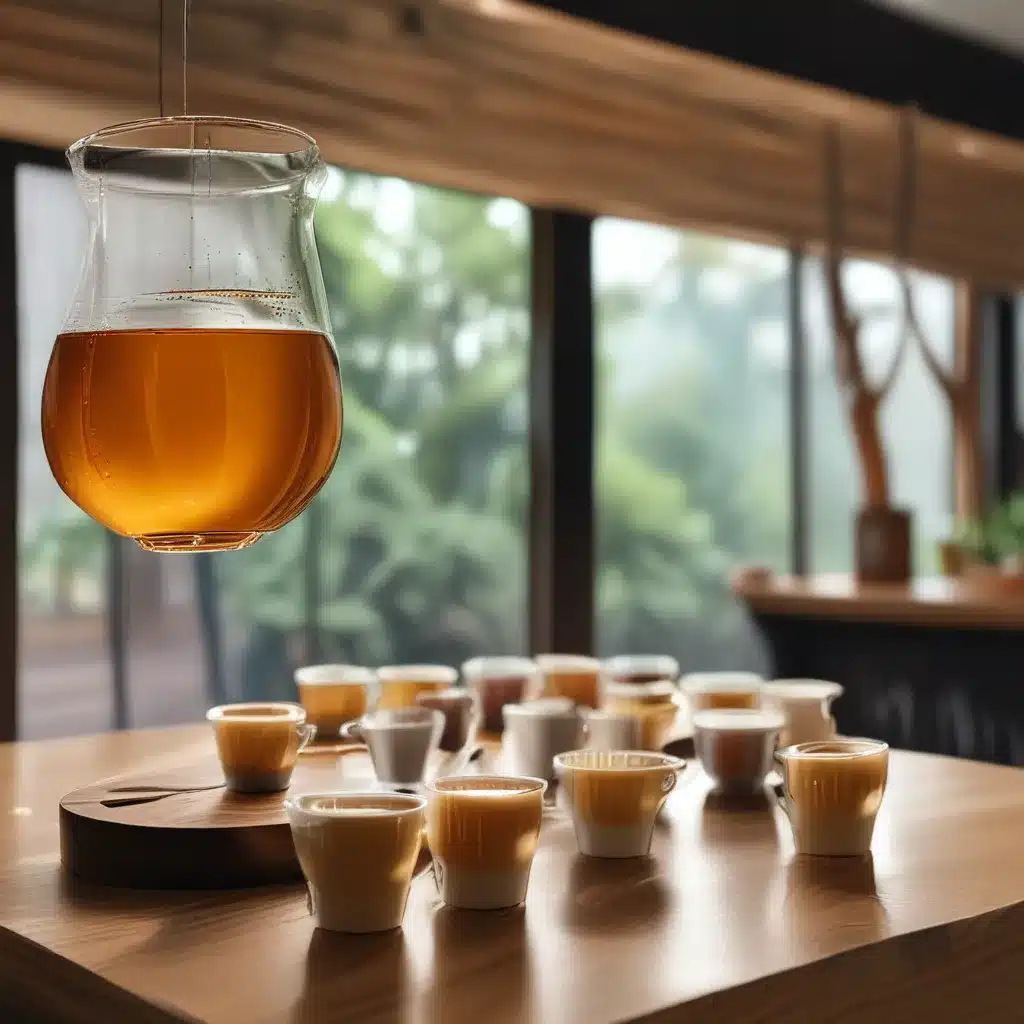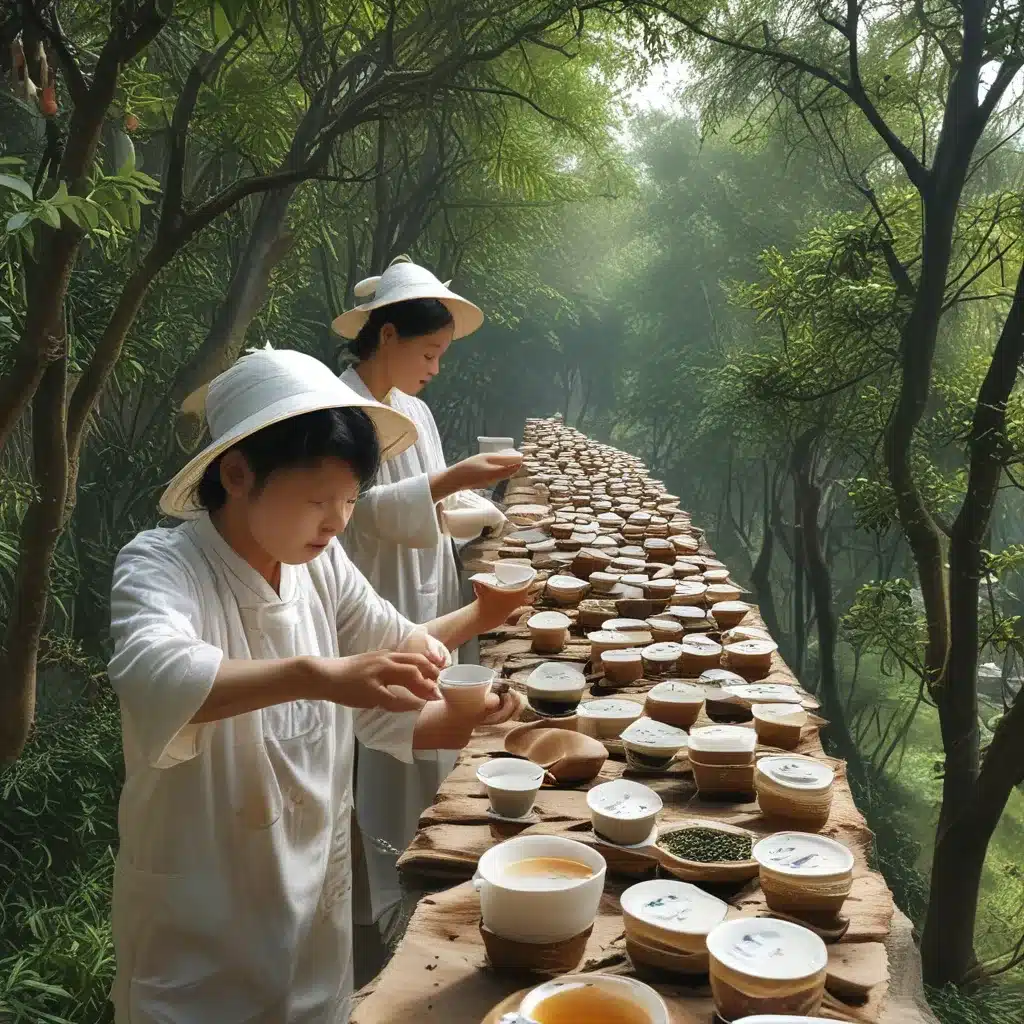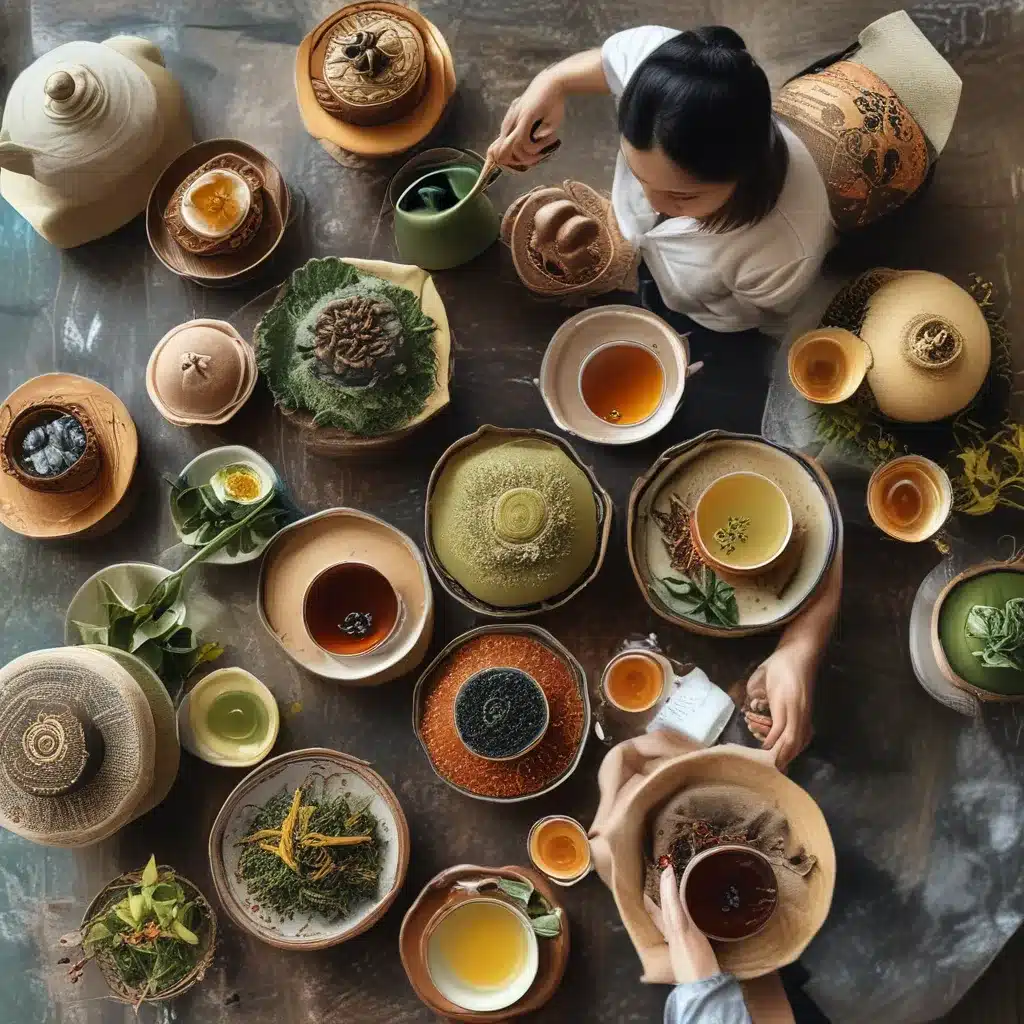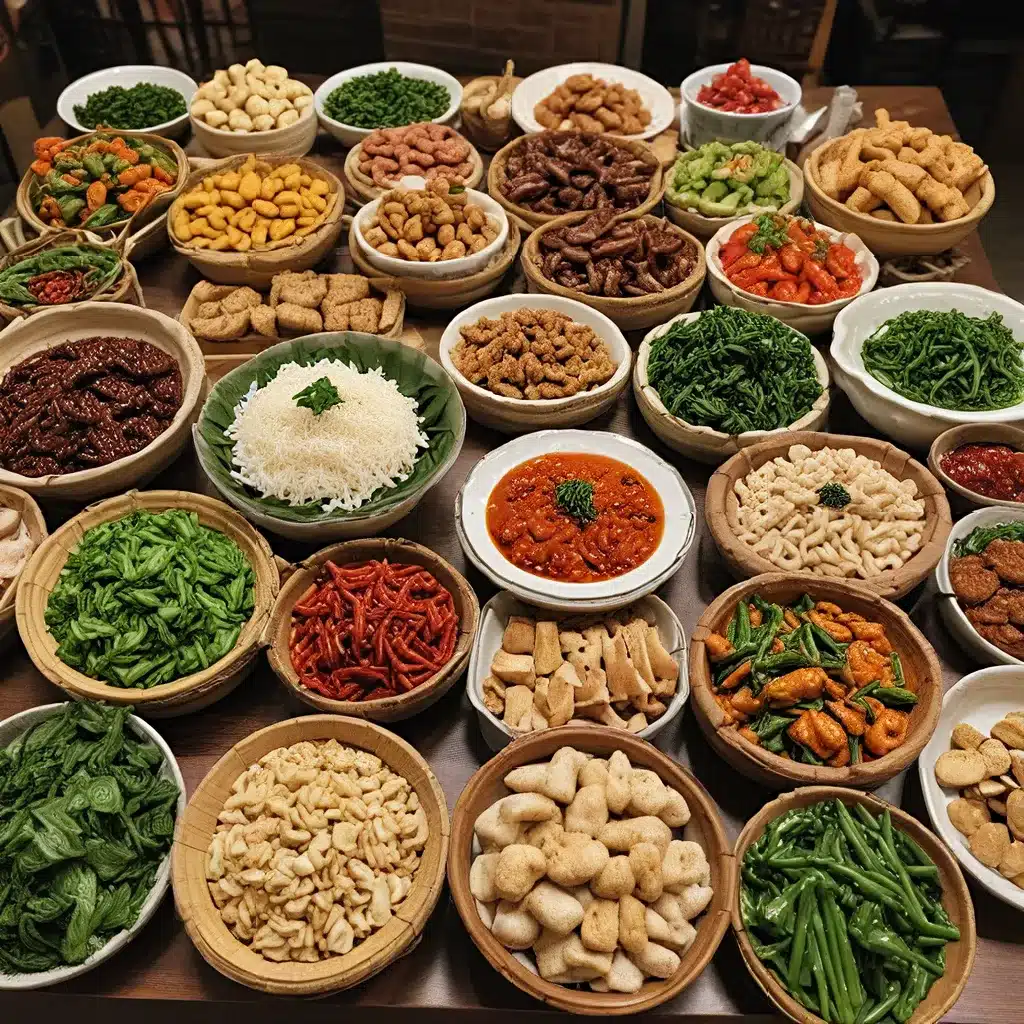
The Allure of Shanghai’s Cuisine
As I step into One Dragon Restaurant, the aromas of sizzling spices and fragrant herbs envelope me, igniting a crescendo of anticipation. This renowned Shanghai-style eatery is my gateway to a culinary adventure, where the city’s rich gastronomic heritage unfolds before me.
Shanghai’s cuisine is a captivating fusion, a tapestry woven with threads of tradition and innovation. It is a culinary symphony that celebrates the region’s abundant natural resources and the ingenuity of its chefs. From the delicate balance of sweet and savory in the xiaolongbao dumplings to the bold, umami-rich flavors of the Shanghainese-style braised pork belly, each dish tells a story of the city’s vibrant history and its people’s unwavering passion for food.
As I settle into my seat, I can’t help but be entranced by the graceful dance of the servers, their movements precise and efficient, yet imbued with a sense of reverence for the gastronomic experience they are about to unveil. I know that I am about to embark on a journey that will ignite my senses and leave an indelible mark on my palate.
Unlocking the Secrets of Shanghai’s Nutritional Bounty
Shanghai’s culinary landscape is a tapestry of diverse influences, each thread adding depth and complexity to the overall picture. At the heart of this tapestry lies a deep reverence for the land and its bounty, a reverence that has been passed down through generations of Shanghainese chefs and home cooks.
Anna Mindess, a renowned food writer and cultural explorer, shares her insights into the intricate relationship between Shanghai’s cuisine and its natural environment. “The chefs in Shanghai have an innate understanding of the rhythms of the land and the sea, and they use this knowledge to craft dishes that are not only delicious but also deeply nourishing,” she explains.
This dedication to using the freshest and most locally-sourced ingredients is evident in every dish that graces the table at One Dragon Restaurant. The restaurant’s executive chef, a master of his craft, sources his produce from trusted local farmers and fishermen, ensuring that the flavors and nutrients of the ingredients are at their peak.
Savoring the Seasonality of Shanghai’s Cuisine
One of the hallmarks of Shanghai’s culinary tradition is its unwavering respect for the changing seasons. As Arthur Hamon, a French food and wine blogger based in China, explains, “The chefs in Shanghai are like artisans, carefully crafting their dishes to showcase the unique flavors and textures that each season has to offer.”
During the spring, the menu at One Dragon Restaurant is often dominated by delicate, tender greens and vibrant, fresh seafood. The chefs may feature a delightful dish of steamed baby bok choy, its leaves glistening with a light soy-based dressing, accompanied by sweet, succulent shrimp.
As the summer heat intensifies, the focus shifts to cooling, refreshing ingredients. The restaurant might offer a refreshing cold noodle salad, the slippery strands dressed in a zesty, tangy vinaigrette and topped with julienned vegetables and a sprinkle of toasted sesame seeds.
And when the chill of autumn settles in, the menu transforms once more, showcasing the robust, comforting flavors of the season. A hearty, slow-braised pork belly dish, its meat fall-off-the-bone tender and its sauce rich and glossy, becomes a centerpiece of the autumn menu, a perfect pairing for a warm, fragrant cup of jasmine tea.
Throughout the year, the chefs at One Dragon Restaurant remain attuned to the rhythms of nature, crafting dishes that celebrate the inherent goodness and nutrition of the season’s bounty.
Unlocking the Nutritional Secrets of Shanghai’s Cuisine
As I savor each bite, I’m struck by the depth of flavor and the sheer nutritional value that permeates every dish. It’s no wonder that Shanghai’s cuisine is revered for its health benefits, a testament to the ingenuity and culinary wisdom of its practitioners.
Arthur Hamon explains that the chefs in Shanghai have a deep understanding of the inherent properties of the ingredients they use, and they skillfully harness these to create dishes that nourish the body and the soul.
“The use of fermented sauces, like the famous Shanghainese soy sauce, not only adds depth of flavor but also introduces beneficial probiotics that support gut health,” he notes. “And the generous use of leafy greens, such as bok choy and spinach, provides a wealth of essential vitamins, minerals, and antioxidants.”
But the nutritional prowess of Shanghai’s cuisine extends far beyond the individual ingredients. The chefs at One Dragon Restaurant employ a delicate balance of cooking techniques, from steaming and braising to stir-frying, to preserve the integrity of the ingredients and unlock their full nutritional potential.
“The art of Shanghai cuisine lies in the ability to extract the maximum nutritional value from each component, without sacrificing flavor or texture,” explains Anna Mindess. “The chefs here understand that the key to creating truly nourishing dishes is to honor the inherent properties of the ingredients and to treat them with the utmost care and respect.”
As I savor the expertly crafted dishes before me, I’m struck by the harmonious interplay of flavors and the profound sense of well-being that seems to radiate from each bite. It’s a culinary experience that not only delights the palate but also nourishes the body and the spirit.
Celebrating the Cultural Tapestry of Shanghai’s Cuisine
Shanghai’s culinary landscape is a tapestry of rich cultural influences, each thread woven together to create a truly captivating and diverse gastronomic experience. At the heart of this tapestry lies a deep respect for the city’s storied history and the diverse communities that have called it home.
Arthur Hamon elaborates on the cultural significance of Shanghai’s cuisine, stating, “The dishes served here are not just about flavor and nourishment; they are also a reflection of the city’s vibrant history and the stories of the people who have shaped it.”
One Dragon Restaurant’s menu is a testament to this cultural diversity, with dishes that draw inspiration from the city’s various ethnic enclaves and the culinary traditions they have brought with them. From the delicate xiaolongbao dumplings, a signature of the Shanghainese culinary heritage, to the aromatic, spice-infused dishes that pay homage to the city’s Sichuan and Cantonese influences, each plate is a celebration of the rich tapestry of Shanghai’s gastronomic identity.
As I savor each dish, I can’t help but feel a sense of connection to the city’s past, a tangible link to the generations of chefs and home cooks who have dedicated their lives to preserving and evolving this remarkable culinary tradition. It’s a humbling experience, one that reminds me of the profound significance that food can hold in shaping the cultural fabric of a city.
Embracing the Future of Shanghai’s Cuisine
While One Dragon Restaurant pays reverence to the time-honored traditions of Shanghai’s culinary heritage, the chefs here are also masters of innovation, constantly pushing the boundaries of what is possible in the realm of Chinese cuisine.
Arthur Hamon notes, “The chefs in Shanghai are not content to simply replicate the dishes of the past; they are constantly experimenting with new techniques, new ingredients, and new flavor combinations, all while staying true to the core principles of their culinary tradition.”
This spirit of innovation is evident in the restaurant’s menu, which features a harmonious blend of classic Shanghainese dishes and modern, creative interpretations. One such example is the restaurant’s take on the traditional braised pork belly, where the chefs have elevated the dish by incorporating a whisper of citrus zest and a subtle hint of Sichuan peppercorn, creating a delightful interplay of sweet, savory, and subtly spicy flavors.
But the restaurant’s commitment to innovation extends far beyond the plate. The chefs at One Dragon Restaurant are also at the forefront of the city’s sustainability movement, working tirelessly to source their ingredients from local, environmentally-conscious farmers and producers.
“The chefs here understand that their role is not just to create delicious food, but to also be stewards of the land and the resources that sustain us,” explains Anna Mindess. “They are constantly exploring new ways to reduce their environmental impact and to ensure that the rich culinary heritage of Shanghai can be passed down to future generations.”
As I savor the last bite of my meal, I can’t help but feel a sense of awe and gratitude for the chefs and the culinary artisans who have dedicated their lives to preserving and elevating the incredible gastronomic traditions of Shanghai. This is more than just a meal; it is a journey through the city’s past, present, and future, a celebration of the nutritional treasures that lie at the heart of its vibrant culinary landscape.

